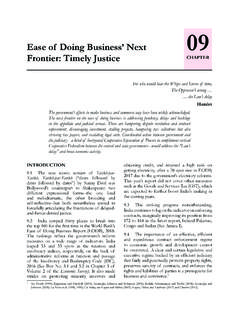Transcription of Chapter 7: Asset Valuation (Intangible Assets)
1 133 Chapter 7: Asset Valuation (Intangible Assets) intangible assets are the most difficult items to quantify and , most business sellers want a large payout for blue sky (goodwill). Quantifying intangible assets is critical for a purchase priceallocation or when selling or buying a business. Although difficult to value,this class of Asset is becoming more of an issue in today s technology drivenmarket. In some instances the intangible assets will account for themajority of the value of a vs.
2 Intangible AssetsBoth tangible and intangible assets represent an opportunity for future eco-nomic benefits. Tangible assets are generally defined as those physical assetswhich are used for the purpose of producing and distributing goods, and some-times services. Tangible assets are usually fixed and have a physical existence(real estate, equipment, cash, accounts receivable). Many times the value of aspecific tangible Asset will be measured by its assets typically have a recognizable description, have the abilityof being destroyed or terminated, and derive most of their value from expectedfuture benefits.
3 These assets have no physical existence (for the most part). intangible assets can be measured by consideration of their costs but are gener-ally valued based on the expected economic income to be generated by the assetover a period of businesses with a low percentage of tangible assets (such as ser-vice companies and professional practices) have a large percentage of intangi-ble net worth. On the opposite side of the spectrum are Asset intensivebusinesses whose value is principally from its fixed and current assets, and lessso from intangible assets .
4 Figure 7-1 on page 134 can more accurately showthese differences for various types of that two companies have identical cash flows: (a) Company Ahas 20% of its value in intangible assets , with 80% in tangible assets; and, (b)Company B has 80% of its value in intangible assets , with 20% in tangibleassets. Company A will probably have more debt, need more of a reserve for thereplacement of short lived assets, and is possibly a high commodity business,relative to Company B. These differences are important to understand when val-uing a business or the intangible Asset Valuation (Intangible Assets) 134 Figure 7-1: Differences in Fixed versus intangible assets for Various BusinessesReasons for Valuation of Intangible assetsTable 7-1 lists the most typical reasons for the request of an intangible 7-1.
5 Reasons for Intangible Asset ValuationsCategoryReasonPurchase Price AllocationStatements of Financial Accounting Standards(SFAS) 141 & 142, IRC 1060, IRC 197 Pre-acquisition AssessmentDiscerning what is tangible vs. intangiblePurchase of Selected AssetsLicensing or purchaseFinancing PurposesFinancingBankruptcySolvency, Collateral, taxation issuesRoyalty Rate NegotiationNegotiationsIntercompany Transfer PricingIRC 482 Tax PlanningEvaluating gains/lossesAd Valorem TaxesTax reduction LitigationDamagesAsset Valuation (Intangible Assets) 135Of the intangibles shown in Table 7-1, Section 197 assets are the mostcommonly valued intangibles .
6 Section 197 intangible assets are assets catego-rized by the Internal Revenue Service for amortization over 15 years. Section197 assets include:(1)goodwill and going concern value, and covenants not to compete as they relate to the sale of a business;(2)workforce in place;(3)information base;(4)know how;(5)any franchise, trademark, or trade name;(6)any permit, license, or other right granted by a government agency;(7)any customer based intangible;(8)any supplier based IntangiblesTable 7-2 shows a general list of intangibles which are usually encounteredin a business.
7 Note that assets which are not easily identifiable are usuallyreferred to as goodwill. Both identifiable and unidentifiable intangibles may have unlimited usefullives. Depending upon the type of Asset , the useful life may be limited to factorssuch as legal, contractual, or regulatory provisions, competition, life expectan-cies of employees, and economic 7-2: General List of intangible assets *FormulasLoan and Mortgage PortfolioFiles and RecordsKnow HowCopyrightsFilm and Record LibrariesPersonnelCore Bank DepositorsFilm RightsTrademarks and NamesCovenants Not To CompeteFranchise AgreementsPackagingCustomer Lists & GoodwillUnpatented TechnologyIndirect Construction CostsDesigns, Drawings.
8 And ModelsBacklogRun-In CostsDistribution NetworksContractsSystemsEasement RightsLeasehold InterestsMicroficheFavorable DebtsLicense AgreementRightsMineral Water RightsLocation ValueGoing ConcernPatentsSoftwareAssembled PlantPatent ApplicationsTrade SecretsWo r k F o r c ePerformance RightsProduct Line* this is not a comprehensive listAsset Valuation (Intangible Assets) 136 Valuations are mostly requested for: patents trademarks and names covenants not to compete goodwill copyrights and trade secretsMost intangible assets are valued based upon a cost, or an income , most values rely upon proforma (future) projections.
9 A discus-sion of the different approaches to valuing intangibles is presented first, fol-lowed by an overview of these four most requested ApproachThe cost approach is the total of all expenses incurred to create the intangi-ble Asset . Two important components of the cost approach are useful life andobsolescence. The most common techniques of establishing the useful life are: The remaining legal life ( , for a patent, trademark, license, copyright or contract) Remaining physical life Remaining functional life (certain chemical formulas, in say lubricants or cleaners, become obsolete if they are not continually updated) Remaining technological life ( with computers, 486 technology gives way to pentium technology, and so forth) Economic Life Actuarial Life ( cable subscribers, or telephone advertising customers)
10 ObsolescenceObsolescence (when something has a diminished value versus its originalcost) is an important concept. While it is usually discussed in a cost approach, itis most pertinent to an income approach. Obsolescence of a product, a trade-name, or mark related to the product, depends upon the industry in which thecompany operates, and whether goodwill is typical in the industry. In someindustries, obsolescence can occur within 3-6 months ( , computers/soft-ware), while in other industries, obsolescence can occur after decades or 7-3 shows the differences in various industry products with respect why does obsolescence matter?
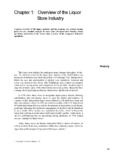

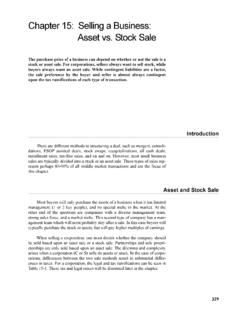
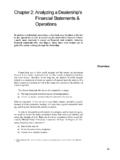
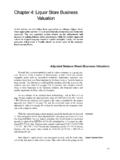
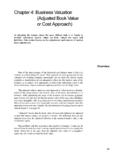
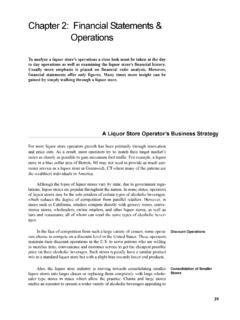
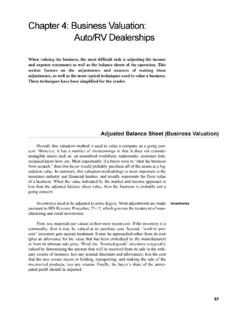


![01 CFSC TAX RESEARCH FINAL REPORT[1]](/cache/preview/9/b/4/2/4/c/9/d/thumb-9b424c9d8e0a3364972be1ee73a14d4e.jpg)
